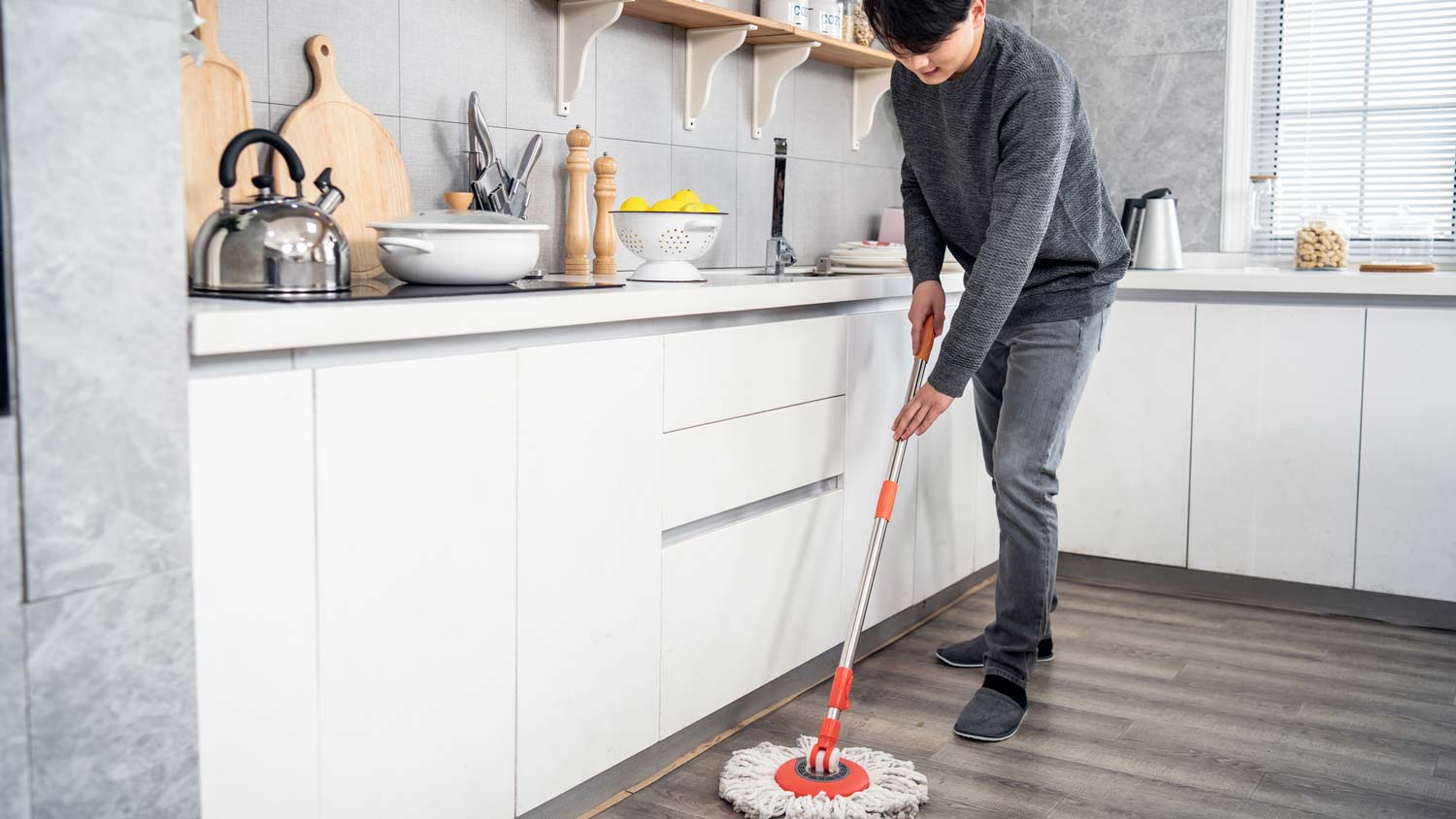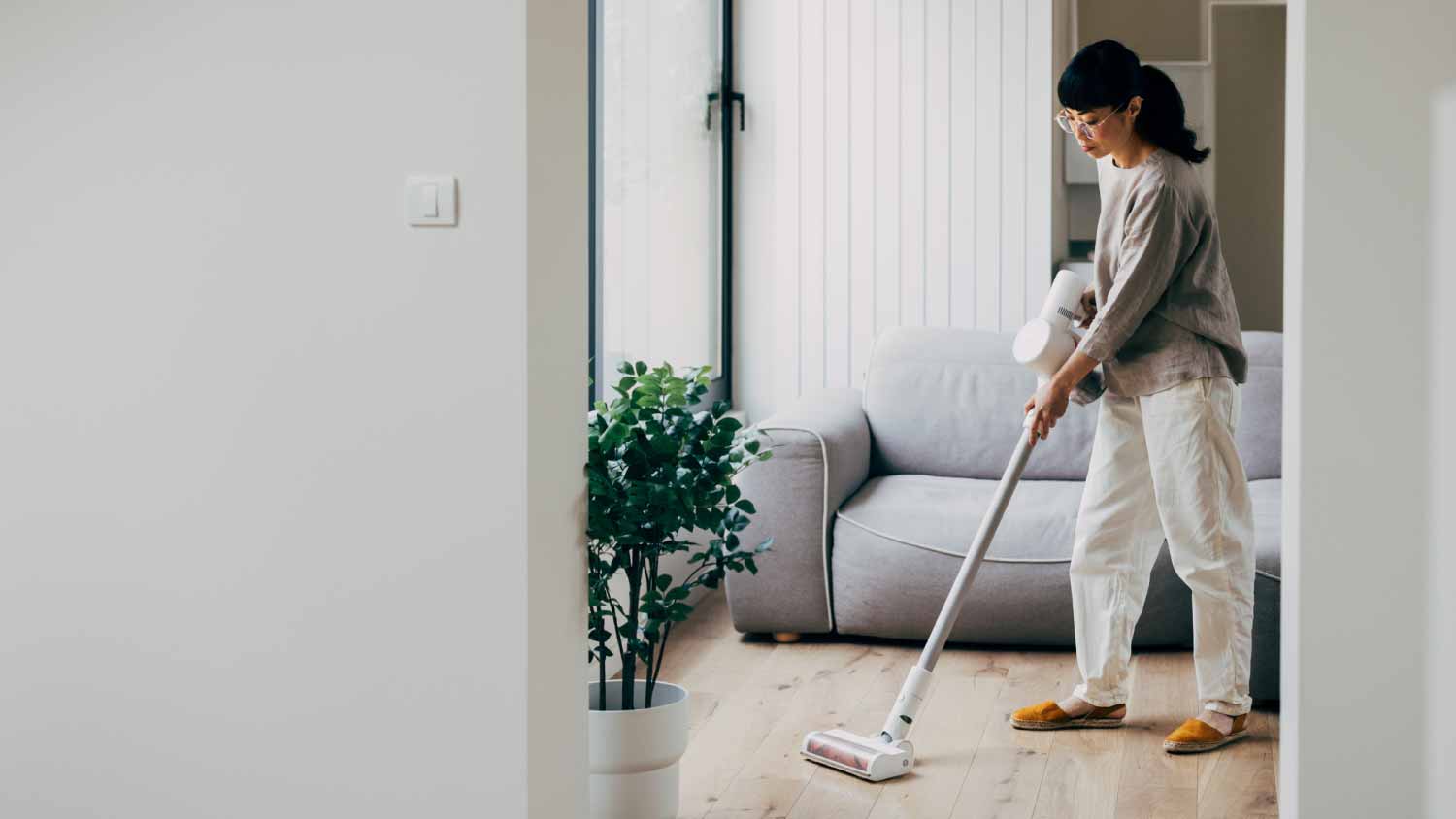
Clean walls are an important part of a well-kept house. Use this wall cleaning cost guide to see what it would cost to hire a professional to get the job done.
This is an easy task to check off your to-do list in 30 minutes or less


Don’t let a dirty bathtub keep you from unwinding at the end of a long day. Keeping your bathtub clean is important for your own self-care routine, but it’s also necessary to prevent mildew or rust stains. Whether you're learning how to clean an acrylic bathtub or how to clean a bathroom overall, getting a squeaky clean tub should be quick and easy.
Before you grab your strongest, most abrasive cleaners, make sure you know how to clean an acrylic bathtub. This material requires a gentler touch so that you don’t scratch it in the process. Even if you're hoping to remove rust stains from your tub, abrasive cleaners with acetone or bleach are not the way to go. Avoid steel wool or any other touch scrubbers outside of those with gentle plastic bristles. Some of the best cleaners for your acrylic tub can be found around the house.
These may include:
Baking soda
Lemon juice
Distilled white vinegar
Dish soap
Borax
Commercial cleaners approved for acrylic
If this is the first time you’re cleaning the tub in a while, and you need to get rid of some stain buildup, you can use vinegar and water. Plug the drain and fill the tub with hot water, then add 2 cups of distilled white vinegar. Let the mixture soak for 15 minutes, then drain the bathtub. If your tub doesn’t have a lot of stains and just needs its weekly cleaning, you can skip this step and move on to the next step.
Baking soda is great for clearing off the dirt that can accumulate between tub cleanings. Sprinkle baking soda generously all over the tub. Don’t neglect the tub ledges and corners, where the ledges meet the bathroom walls or acrylic surround. Let the baking soda sit for about 10 minutes.
Use a damp sponge or microfiber cleaning cloth to begin scrubbing the baking soda. The moisture in the sponge or cloth will create a paste with the baking soda in the tub to help lift up dirt and grime. Give extra attention to corners and tub ledges, where grime has more potential to build up. Here, a soft-bristled brush may be beneficial for cleaning tough dirt spots without damaging the acrylic surface.
Some stains might be too tough for your baking soda and vinegar cleaning mixtures. Fortunately, there are many all-purpose bathroom cleaners that are safe for acrylic tubs. After trying the baking soda trick, rinse it away, and then try a commercial cleaner.
Be sure to check the label and confirm the cleaner you want to use is safe for your tub, then follow the directions on the bottle to spray and scrub away tub stains. Always work in a well-ventilated area and never mix cleaners together.
Whether you used just baking soda or you opted for commercial cleaners to deep-clean your tub, you’ll want to rinse and wipe down the area to prevent water spots or mildew. Run the faucet to rinse out the base of the tub, and use a clean, wet cloth to wipe down the walls and ledges of the acrylic bathtub. Then, use a dry, clean cloth to thoroughly dry the bathtub.
Set yourself up for bathtime success by following a few tips on how to clean acrylic tubs. These pertain to both your weekly cleaning regimen, as well as removing tough soap scum.
Pre-rinse your tub before scrubbing to remove all dust, loose grime, and basic soap scum.
Start cleaning from the top down to avoid backtracking as you go.
Save time by soaking your tub and drain to break down soap scum.
Approach special metals with care, such as learning how to clean brass faucets and knobs.
Include your bathtub in your weekly bathroom cleaning checklist, and tackle other tasks while it soaks.
Keep containers of baking soda and white vinegar under your bathroom sink that are designated for cleaning.
For a clean tub you can feel good about bathing in, you should plan to spend about 30 minutes at least once a week cleaning an acrylic bathtub. Cleaning this type of tub is DIY-friendly and requires items you probably already have in your cleaning caddy under the sink.
But if you don’t have much time to dedicate to cleaning or you just want to take the week off, you can hire a local professional cleaning service to clean the tub. Professional cleaners charge about $30 to $50 per hour, and between $85 and $170 for a one-bedroom, one-bathroom home.
Finding the best house cleaner for you can take some time, so be sure to ask your family, friends and neighbors for recommendations, and chat with at least three pros before signing a long-term contract.
I had several things that needed to be done at my house. I called David from City to Shore, and he came out the next day. He power washed my house, cleaned my sidewalks (removed all the stains) and unclogged and cleaned my gutters. He was professional, explained everything he had done and...
They did a great job with painting my house very pleased with the outcome!
They were available as soon as I needed them, and the team was punctual and extremely professional upon arrival. Stephen was knowledgeable about the job that I needed done and was able to offer suggestions to make the outcome most functional for our current and future needs.
I had a great experience with Simpson Home Improvement. Excellent job and good services.
Exceptional service from this cleaning company! Our bathrooms and bedrooms have never looked so spotless. The team was thorough, efficient, and paid attention to every detail. I highly recommend their services for a sparkling clean home.
Tres informed me of the time he would be getting to my house and kept me informed. Reminded me of my appointment. Cleaned up after their work and left no debris. Highly recommend.
On time, courteous, protected my rugs and furniture, cleaned chimney thouroughly.
I wanted to take a few minutes and say that the work and professionalism shown by Valentin Solana and his team were outstanding. They arrived on time, worked quickly, and unlike other contractors did not play loud music. They completed the job -- Drywall repairs in four rooms in addition to...
We hired them to remove 2 very large trees in our back yard. They were on time and the quality of service exceeded our expectations. They cleaned up and completed in less than 3 hours. Amazing company and polite workers. We will be using them again.
AJ was terrific. He called right away when I put in my request through Home Advisor. He came to the house, gave me a quote to replace the garage door broken springs, and worked with me on price. Work was excellent and AJ was very nice to boot! I highly recommend AJ to anyone.
From average costs to expert advice, get all the answers you need to get your job done.

Clean walls are an important part of a well-kept house. Use this wall cleaning cost guide to see what it would cost to hire a professional to get the job done.

Mattresses can trap dust mites, sweat, and dirt. Learn how to clean a mattress to reduce allergens and extend the life of your mattress.

Ammonia for household use can help do everything from making the toughest chores a breeze to repelling pests of all sizes to even feeding your houseplants. Find out some of the best, most surprising ways to use ammonia around the house.

Construction leaves dust and debris in its wake. If you hire a pro to handle it, here are the post-construction cleanup questions you should be ready to answer.

Learn the difference between a cleaning company vs. an individual cleaner, and which one is right for you and your home.

How often should you deep clean your house? Learn what timing factors to consider before deep cleaning your home.